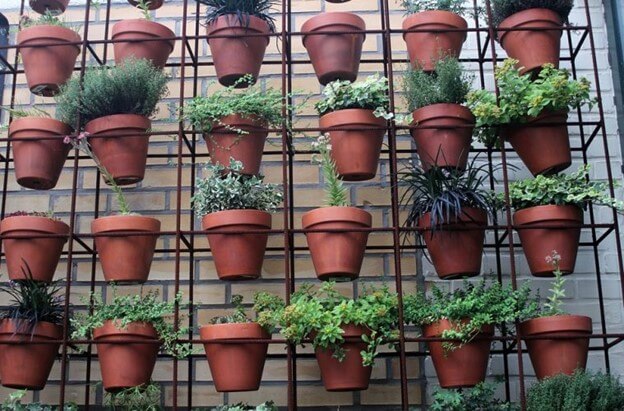(Agriculture Monthly) DECEMBER 30, 2020
In almost the entirety of 2020, there has been a surge in the numbers of urban gardeners throughout the country due to the increased amount of time that people spend indoors to keep themselves safe from the COVID-19 pandemic.
Through urban gardening, people in the metro have a sustainable supply of healthy food at their disposal, and a means to while away time while doing something productive.
Although the thought of growing one’s own food seems easy, there are actually several factors to consider to secure its success.
During an episode of AgriTalk 2020, a series of webinars held in partnership between the Department of Agriculture’s Agricultural Training Institute (DA-ATI) and Manila Bulletin, six basic yet crucial elements were discussed by Carlo Sumaoang.
Carlo Sumaoang is a millennial farmer and founder of MNL Growkits, a brand that sells a complete growing kit for the aspiring farmer or gardener. His farming experience and knowledge have served him well when it comes to finding the right mix to achieve success in urban gardening.
Before engaging in urban gardening, Sumaoang said that there are six things to consider: space, seeds, soil, sunlight, water, and containers.
One of the most common problems for urban gardeners is space or the lack of it thereof. But according to Sumaoang, this shouldn’t pose much of an issue even if one resides in a condominium.
“Whether the space is big or small, we can grow something there,” he said.
He later encouraged that, if possible, the space for growing plants should be located outside.
“This is to mimic how plants grow in a natural setting. If living in a condo, the best place to grow food is on a balcony or a windowsill that receives a good amount of sunlight,” Sumaoang said.
After finding the right spot to grow plants, the next order of business should be to acquire seeds to plant. Buying from stores is advisable but saving seeds from food scraps is also encouraged so it won’t go to waste, and having seen the output from the fruit or vegetable it was taken from, the next generation of products could replicate the characteristics from where it came from.
To save seeds, Sumaoang made an example of a tomato. Slice a tomato in half, or if already sliced, take a portion where the seeds are still intact. Using a clean spoon, scoop the seeds out and place them on a paper towel.
“Push the seeds around on the paper towel to remove any flesh but most importantly the slime or film coating the seeds. Storing seeds with slime reduces their shelf life when stored,” Sumaoang said.
Once the seeds are clean, they should be air-dried for 24 hours before storing them in a clean container.
This process can also be done in okra, eggplants, and ampalaya.
Before planting the seeds, Sumaoang said that one should consider what type of soil to use for their plants. There are three kinds to choose from: clay, sand, and loam, all of which have their own unique characteristics and functions in plant development.
Clay soil is somewhat thick and compact, thus resulting in a slower water absorption and draining rate. In other words, it retains water longer than the other two kinds. It is best used when growing fast-growing vegetables.
Sandy soil, on the other hand, is looser compared to clay. It has a faster water absorption and draining rate, making its water retention quicker. It is best used in growing herbs.
Loam is a mix between clay and sandy soil. It has a moderate water absorption and drainage rate making it suitable to grow fruits in.
“Different plants require different types of soil, so it’s best to find out which ones are best suited for the plant you’re growing or want to grow,” Sumaoang said.
Sunlight
Just like soil, there are three kinds of sun exposure: full, partial, and shaded.
Full sun exposure is when the area receives six or more hours of direct sunlight, making it suitable for fruits and vegetables.
Partially shaded areas, in comparison, are those that receive three to six hours of sun exposure. Sumaoang said that this type of exposure is restricted to growing small plants like herbs since these thrive well under such circumstances.
Lastly, shaded areas are those that receive three hours or less and are restricted to root crops.
“Sunlight used to be a problem before in urban gardening. But now, you can buy grow lights for a practical price to fulfill the plants’ sunlight requirements,” Sumaoang said.
Watering
“There is a common misconception that when gardeners water their plants frequently then these will thrive. We strongly discourage overwatering,” Sumaoang said.
At most, he said that the plants should be watered twice a day–once in the morning and once in the afternoon. But before watering again, make sure that the soil is dry to avoid overwatering and cause problems.
“Do not water your plants in the middle of the day when the sun is high and the temperature is hot. After being exposed to heat, a sudden splash of water could shock their system and cause them to wilt,” Sumaoang advised.
Container
Even if it may sound like something trivial, Sumaoang said choosing the right container is crucial in urban gardening because the right medium should hold the soil, not the water.
He added that as the plants grow, they should be transferred into larger pots that can better accommodate them.
“Plants are smart. When they grow and touch the bottom of the pot, they will think that they’ve already reached the limit of their shelter and stop growing. This could cause plants to stop fruiting and growing into their original size,” Sumaoang said.
In choosing containers, these must have proper drainage to keep the soil from being too wet when watering. But one should not limit themselves to what’s available on the market.
“You can use recyclable materials like old plastic bottles, used cup noodles containers, and more. Explore other possibilities and be creative,” Sumaoang said.
By following these six considerations, any urban gardener can secure success and find satisfaction in growing their own food for days to come.
[Reference: https://www.agriculture.com.ph/2020/12/30/six-things-to-consider-when-engaging-in-urban-gardening/]

About the Author: PATRICIA BIANCA S. TACULAO
Patricia Taculao, or Patty as she likes to be called, is a content producer for Manila Bulletin Digital Lifestyle. She graduated from University of Santo Tomas with a bachelor’s degree in Journalism. She loves to spend her free time, reading, painting, and watching old movies.




